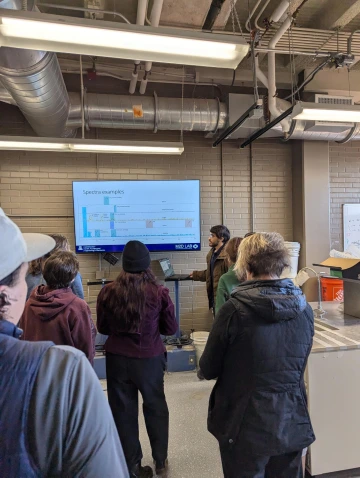Lunar Habitat Builders
Goals
Our team explores how 3D printing can be used to develop innovative, energy-efficient building envelopes on Earth and durable construction materials like lunar concrete for future space habitats. By combining materials science, computational design, and additive manufacturing, we aim to advance sustainable construction both terrestrially and extraterrestrially.
We're focused on re-imagining how we build for the future, both here on Earth and in space. We are exploring how 3D printing technology can be used to create energy-efficient building envelopes, which are the outer layers of buildings responsible for controlling heat flow and protecting interiors from the external environment. Traditional insulation methods often have limitations when it comes to sustainability, cost, and long-term performance. Through our research, we aim to design and test 3D-printed wall systems that improve thermal insulation while helping reduce the energy consumption of buildings.
In parallel, we are investigating how similar 3D printing techniques can be applied to develop construction materials for use beyond Earth. One exciting part of our research focuses on "lunar concrete," a material ade from moon dust or simulated lunar soil.
This is a highly interdisciplinary project that brings together students and researchers from fields such as architecture, civil engineering, materials science, and environmental studies. We combine materials testing, computational design, additive manufacturing, and thermal analysis to develop and evaluate new construction strategies. Students involved in this team gain hands-on experience with emerging technologies and play a vital role in advancing sustainable solutions for both climate-conscious construction on Earth and future space habitats. Whether you're passionate about green buildings, innovative materials, or space exploration, our team offers a unique opportunity to contribute to meaningful research with real-world impact.
Issues Involved or Addressed
Our team works at the intersection of architecture, engineering, materials science, and environmental design. We investigate how 3D printing can transform the way we build energy-efficient structures, focusing on the design and fabrication of advanced building envelopes that offer better thermal insulation and reduced energy use. At the same time, we are exploring the creation of lunar concrete, an experimental construction material made from simulated moon dust to support future space missions.
Our goal is to develop sustainable, innovative, and cost-effective solutions for construction in both Earth-based and extraterrestrial environments. For more detail see our M2D Lab webpage.
Methods and Tech
We will investigate construction materials through chemical characterization to understand their properties, and based on these findings, we will develop optimized mix designs for their intended applications. These materials will then be tested through 3D concrete printing experiments to evaluate their performance in real-world scenarios.

Academic Majors of Interest
While our team is open to students from all majors, we especially welcome those with engineering backgrounds or interests in CAEM, MSE, AME, SIE, CHEE and ECE.
Preferred Interests and Preparation
Skills: Programming or scripting, lab experience with material testing, basic knowledge of computational design tools.
Attributes:
- Curiosity and willingness to learn across disciplines
- Strong problem-solving mindset
- Ability to work both independently and as part of a team
- Interest in sustainable design or space exploration
- Attention to detail and documentation
- Initiative and creativity in design and experimentation
- Commitment to long-term research involvement
Application Process
To express interest in this team, please complete the VIP Interest Form and select "Lunar Habitat Builders."
This team recruits students for both credit and federal work-study (as available) options for VIP participation.
Team Advisor


